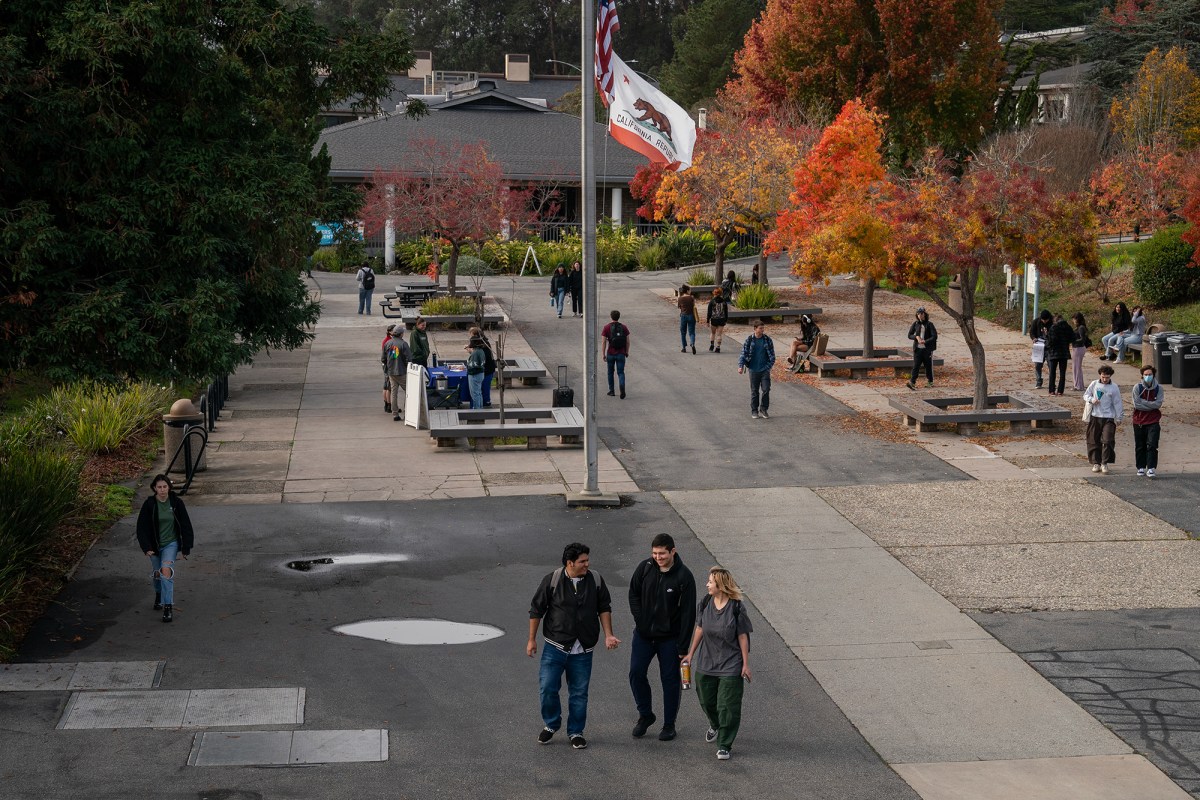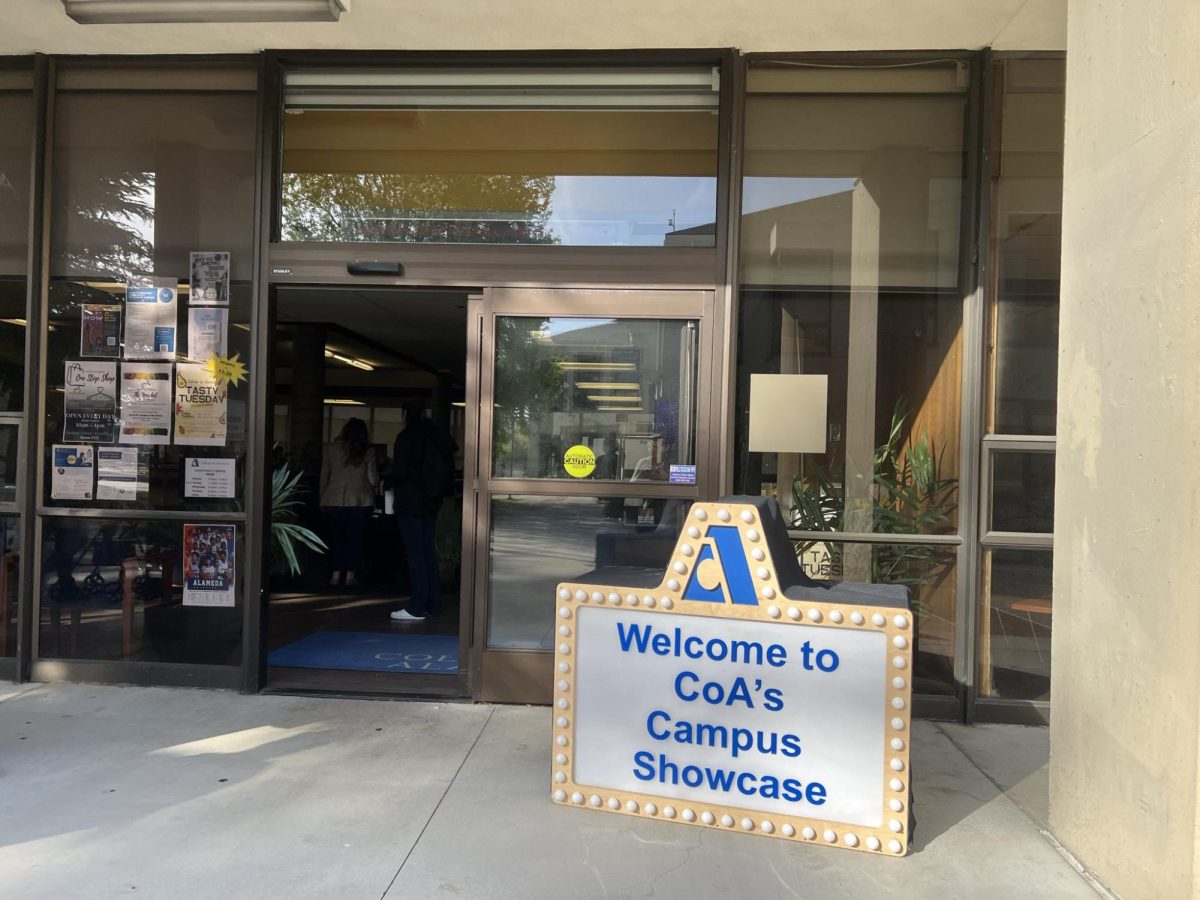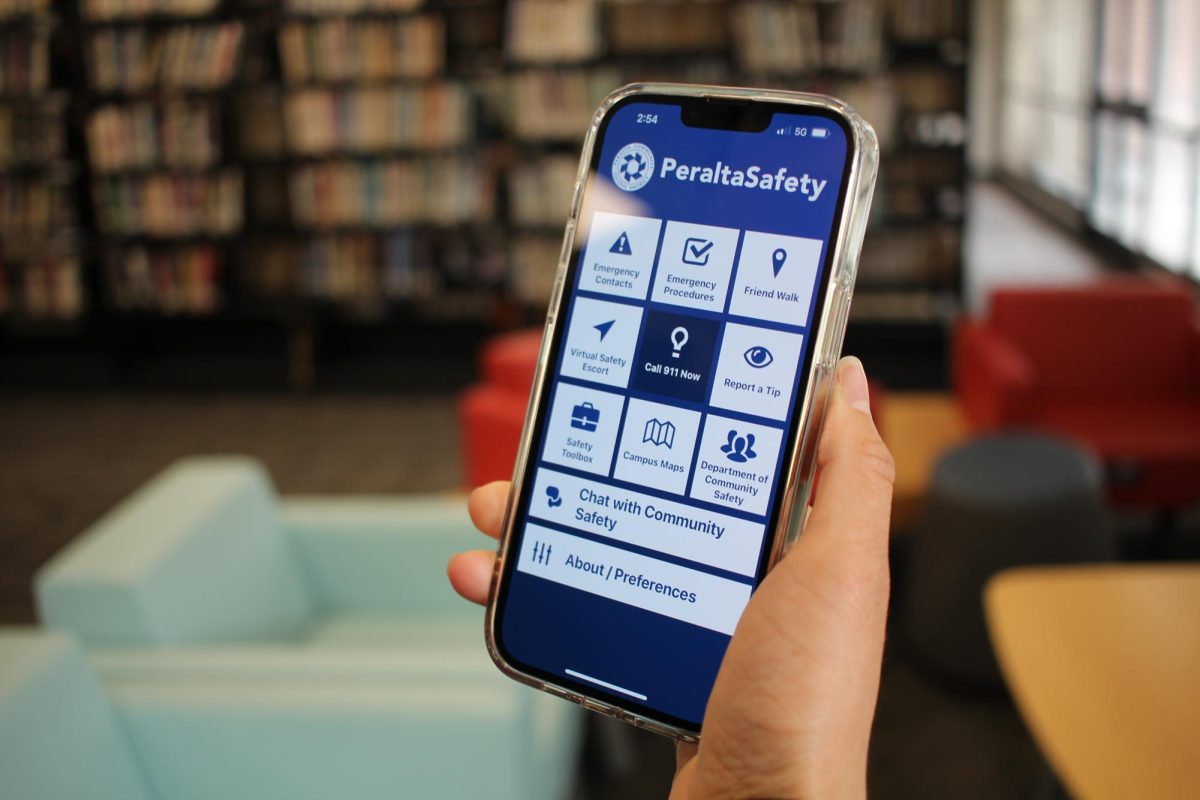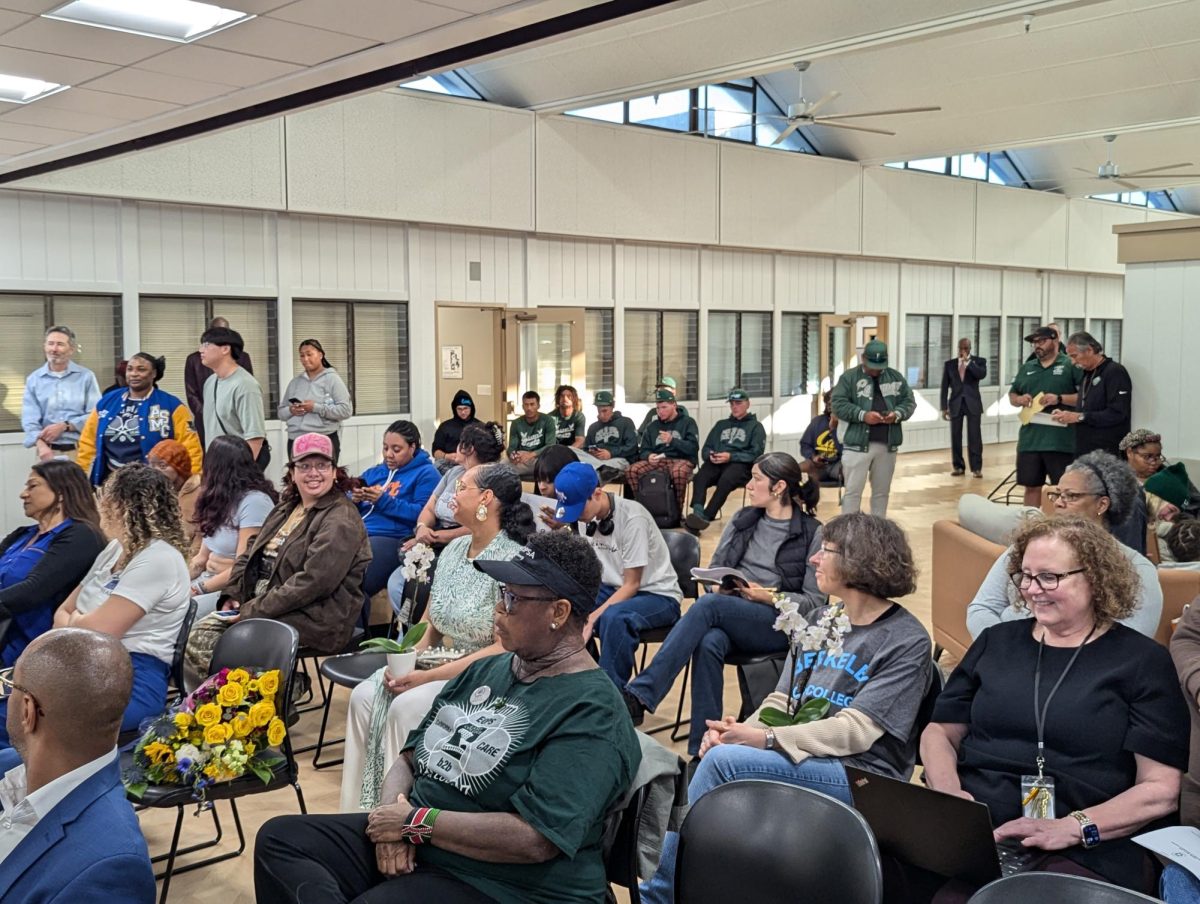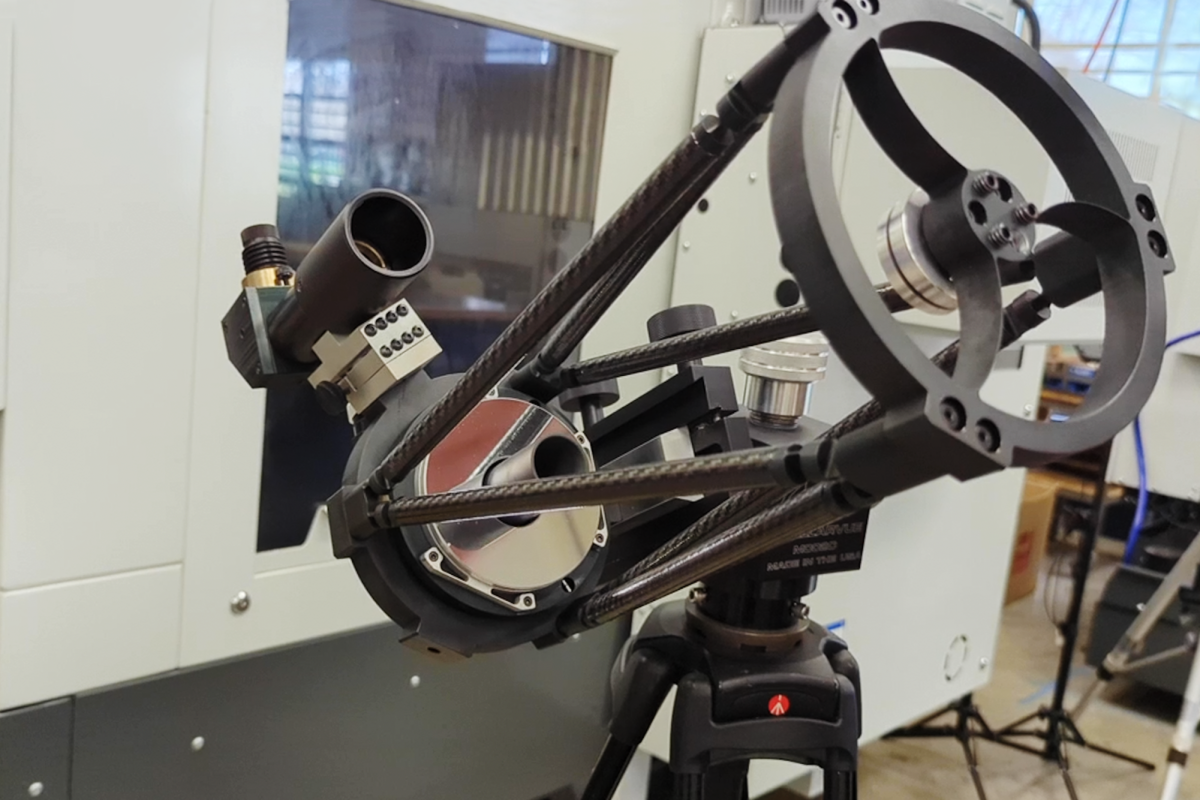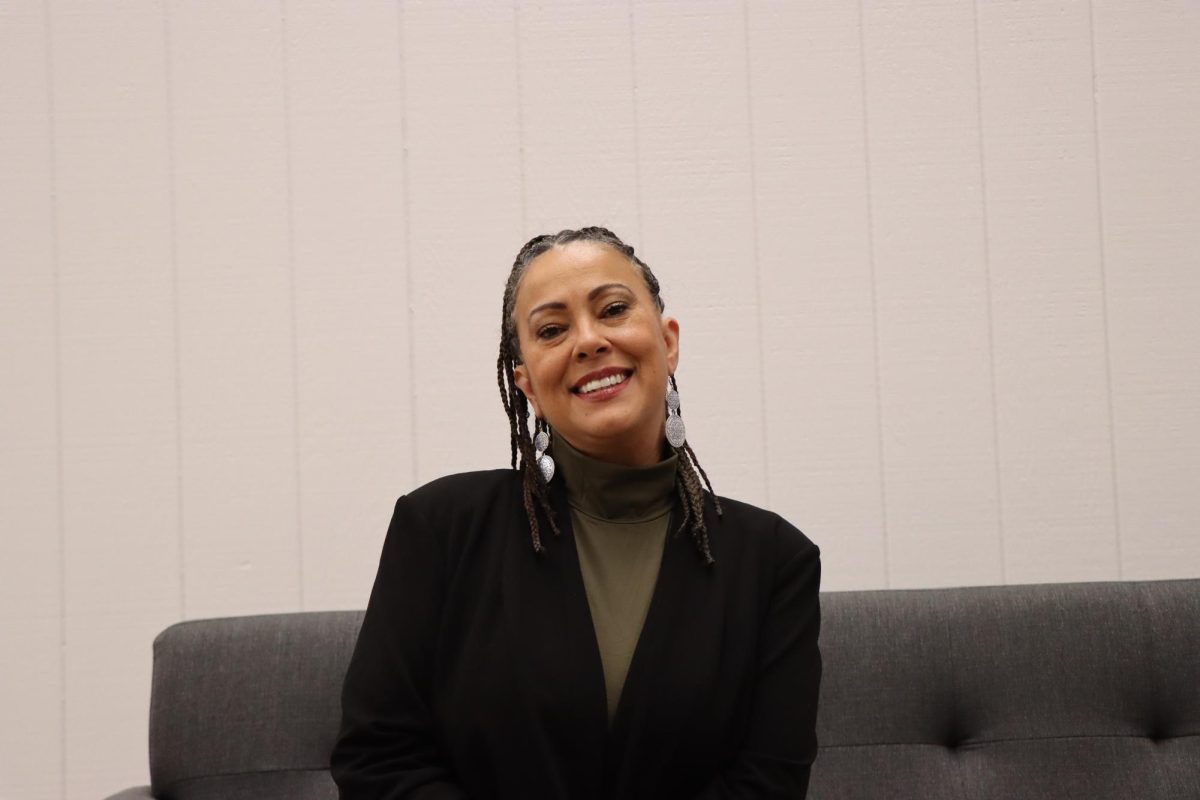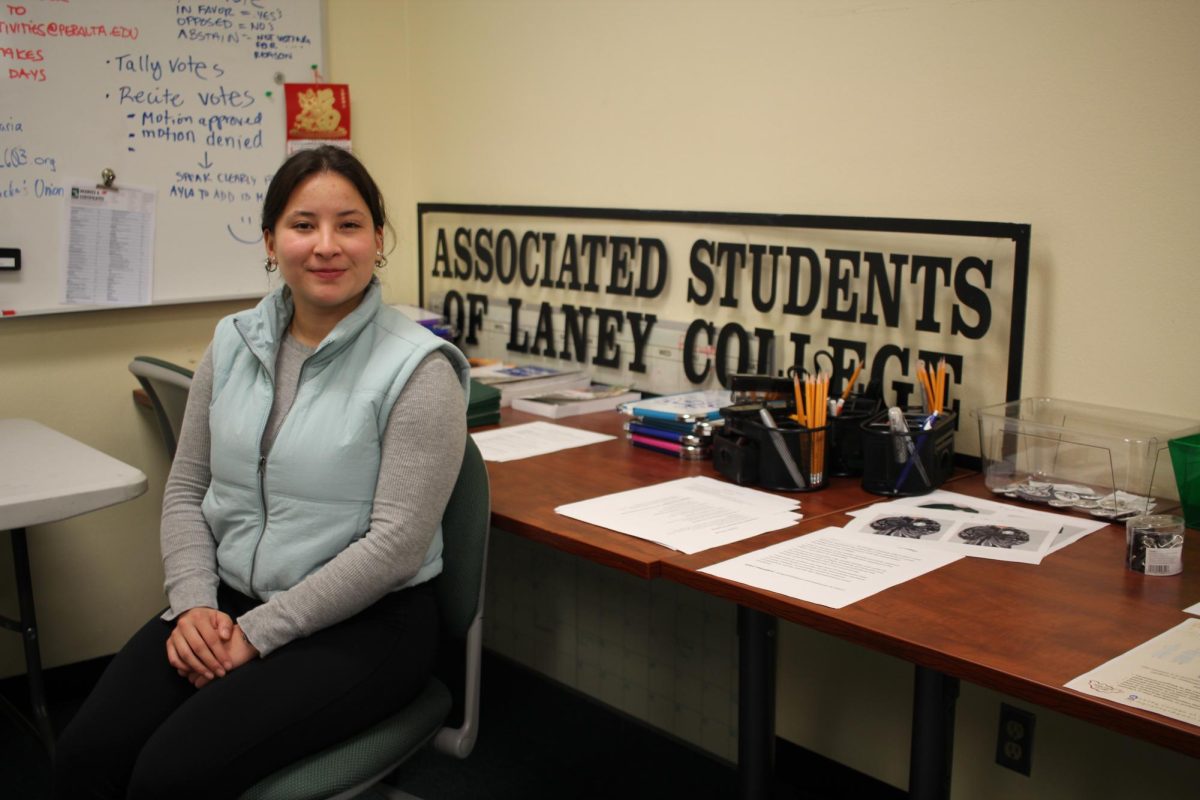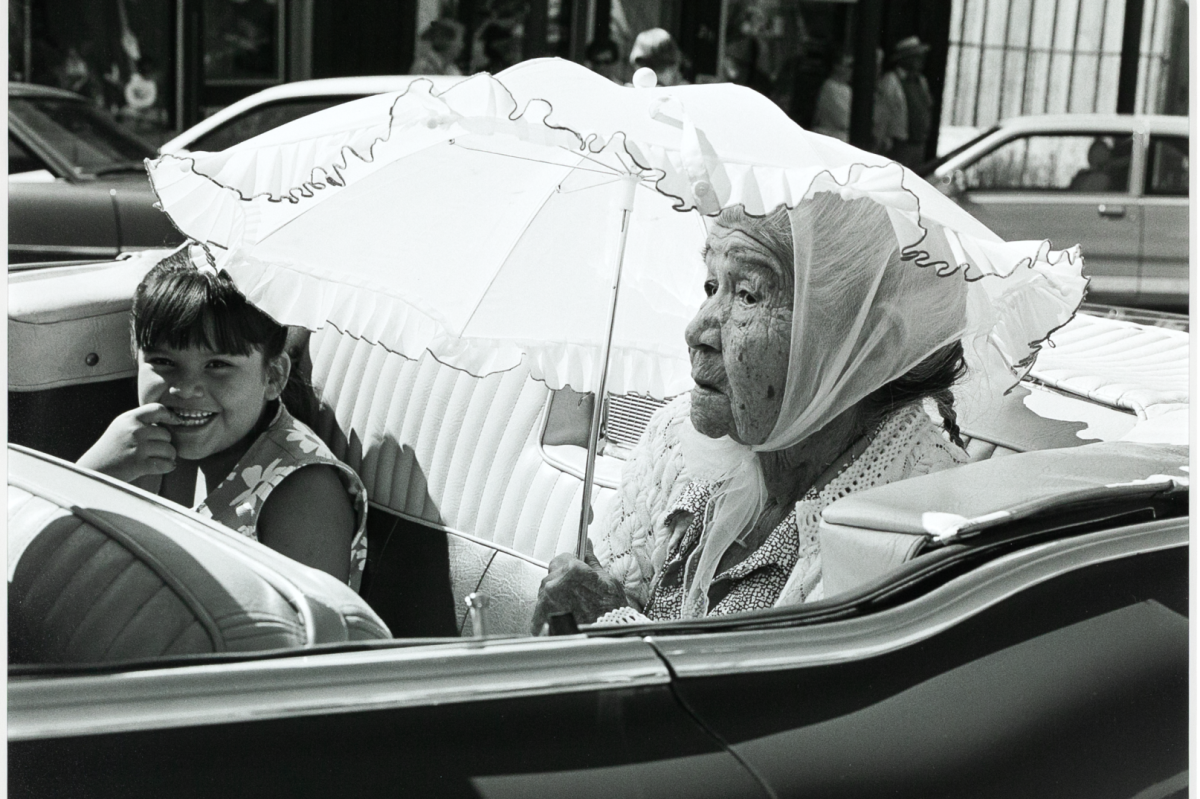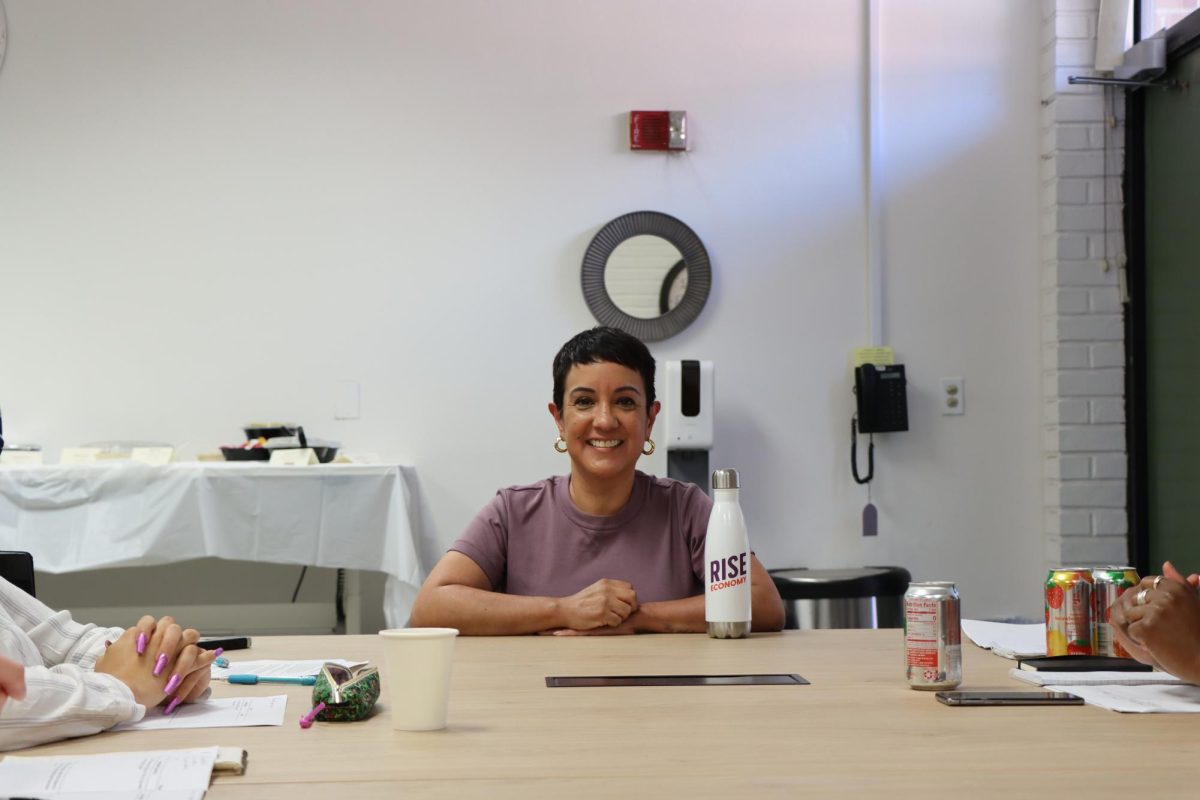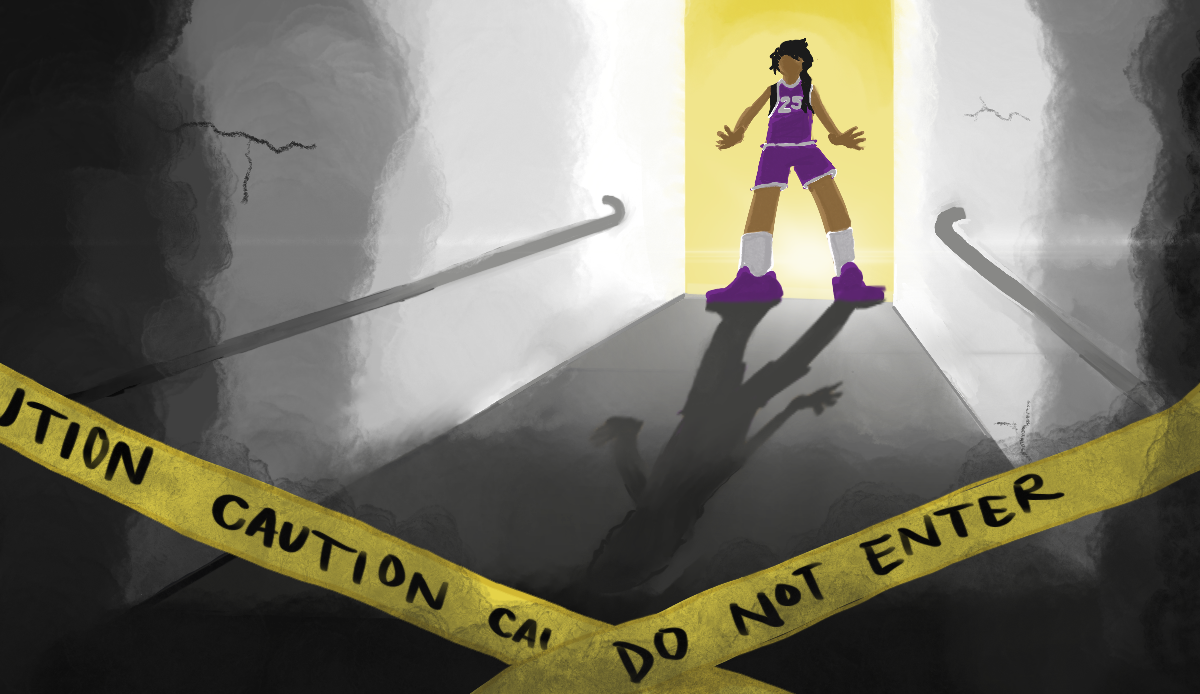Investigative journalist shares tips for truth-seekers in a redacted world
Investigative journalist Michael Montgomery visited the Laney college Mass Media and Society class on April 28. His lecture was preceded two days earlier by a screening of Montgomery’s portrayal
of the “Pot Reporter” in a humorous animated short about medical marijuana.
Michael Montgomery has been a reporter for years. He started as a kid with a passion for journalism, worked the high-school yearbook, and step-by-step honed his chops to become a reporter.
He now works with the Center for Investigative Reporting, a solid and well-respected news organization, right up there with “Frontline” and “60 Minutes.“
 The marijuana piece was a fitting introduction to an accomplished reporter and his work, filled with humor and hard facts.
The marijuana piece was a fitting introduction to an accomplished reporter and his work, filled with humor and hard facts.
While most newspapers are dying out and reporters are being laid off or killed off, Montgomery says that we have more access to information than ever before.
Ordinary citizens can simply apply for papers of interest access through the Freedom of Information Act — which might come to us heavily redacted — or retrieve volumes from social media.
Nowadays, everyone has a camera on their phone. One bit of information leads to another and then to more questions.
Montgomery said that a realistic picture of what real reporting involves is from the scene in the movie “Spotlight” with a handful of reporters spending hours sifting through pages of data in order to find a story, which bloomed into one that was much bigger than ever anticipated.
Good journalism takes painstaking work. But sometimes it begins simply by requesting papers through the Freedom of Information Act.
Then the real grind of quantifiable reporting starts, with data, details and documents, and finally accounts that are stimulating and thought-provoking. Montgomery began his talk with a frightening anecdote of his time in Michoacan, when he accidentally discovered that young girls were going missing from their families.
If families weren’t paying their “taxes”, the drug cartels would pick up their daughters, rape them repeatedly, then send them back to their families, with the intent of shaming.
That segued into a memory of his time in Kosovo after the war when scores of people were going missing.
Permanently. Later the CIR found that the organ- harvesting business was thriving — collateral damage from leaving a war-ravaged people with no economy and no future.
Montgomery spent a lot of time in Pelican Bay while researching a story about solitary confinement and the effects on inmates.
He had pictures of Pelican Bay, footage on a couple of prisoners who came out on the other side of it, one of the men having spent over 15 years in solitary. Prisoners aren’t allowed calendars, books or TV.
One inmate’s journal was page after page of tiny, tight letters crammed between lines of madness.
Prisoners can’t see the sky. There are no windows. They get one hour a day in a so-called exercise room, an 8X12 concrete block. CIR reporters lobbied to get them exercise equipment.
They secretly planted a small camera in the “room” that showed a prisoner mechanically batting the “equipment” — a single handball while mindlessly flanking the concrete walls. It might have only
lasted 10 seconds, but it was requisitely grey and lifeless.
He talked about how the center broke the story on over-prescribing of opiates, with an accompanying portrait of a veteran who came home after tours in the Middle East, only to die from an overdose of medications mixed with alcohol.
The class was interested in what makes a good story. He said that stories need to be important, interesting reporting that is quantifiable, storytelling with humanity, and details with data and documents.
CIR’s “mission is to hold people accountable.”
The CIR followed the “Spotlight” movie by doing their own reporting , following some of the offending priests to South America.
Montgomery works in many mediums. Today’s world makes news stories as close as a personal computer and a cell phone.
But you first need an inquiring mind.
After that, there are stories ready to exhume.

